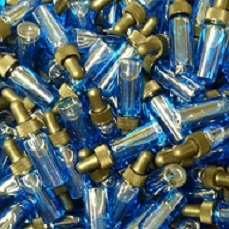880 results found for: ""
Page 73 of 88 pages. ‹ First < 71 72 73 74 75 > Last ›
Anti-M Monoclonal
…M antigen is part of the MNS system and was first reported in 1927. M antigen expression on red cells can show dosage. Anti-M has rarely been implicated in Haemolytic Disease of the Newborn or in Haemolytic Transfusion Reactions. The reagent will cause agglutination (clumping) of test red cells, that…
Anti-C+D+E Monoclonal
…Levine and Stetson discovered the Rh blood group system in 1940. Apart from D the other major Rh antigens are C, E, c and e. The D antigen is highly immunogenic; the C and e antigens are less immunogenic than E and c. The corresponding antibodies are all clinically significant…
Anti-e Monoclonal
…Levine and Stetson discovered the Rh blood group system in 1940. Apart from D the other major Rh antigens are Anti-C Monoclonal, Anti-E Monoclonal, Anti-c and Anti-e. D antigen is highly immunogenic; C and e antigens are less immunogenic than E and c. The corresponding antibodies are all clinically significant since they…
Anti-c Monoclonal
…Levine and Stetson discovered the Rh blood group system in 1940. Apart from D the other major Rh antigens are C, E, c and e. The D antigen is highly immunogenic; the C and e antigens are less immunogenic than E and c. The corresponding antibodies are all clinically significant…
Anti-E Monoclonal
…Levine and Stetson discovered the Rh blood group system in 1940. Apart from D the other major Rh antigens are C, E, c and e. The D antigen is highly immunogenic; the C and e antigens are less immunogenic than E and c. The corresponding antibodies are all clinically significant…
Anti-C Monoclonal
…Levine and Stetson discovered the Rh blood group system in 1940. Apart from D the other major Rh antigens are C, E, c and e. The D antigen is highly immunogenic; the C and e antigens are less immunogenic than E and c. The corresponding antibodies are all clinically significant…
Anti-Cw Monoclonal
…Lorne Monoclonal Anti-Cw blood grouping reagent is a reagent containing a human monoclonal IgM antibody diluted in a phosphate buffer containing sodium chloride, bovine albumin and a preservative. The reagent is supplied at optimal dilution for use with tube, gel card, microplate and slide techniques. For further information or to…
Anti-D Duoclone Monoclonal
…The Rh blood group system was discovered in 1940. The D antigen is the most clinically significant non-ABO red blood cell antigen and has been implicated in causing Haemolytic Transfusion Reactions and Haemolytic Disease of the Newborn. The reagent will cause direct agglutination (clumping) of test red cells that carry…
Anti-D Clone 2 Monoclonal
…The Rh blood group system was discovered in 1940. The D antigen is the most clinically significant non-ABO red blood cell antigen and has been implicated in causing Haemolytic Transfusion Reactions and Haemolytic Disease of the Newborn. The reagents will cause direct agglutination (clumping) of test red cells that carry…
Anti-D Clone 1 Monoclonal
…The Rh blood group system was discovered in 1940. The D antigen is the most clinically significant non-ABO red blood cell antigen and has been implicated in causing Haemolytic Transfusion Reactions and Haemolytic Disease of the Newborn. The reagents will cause direct agglutination (clumping) of test red cells that carry…

